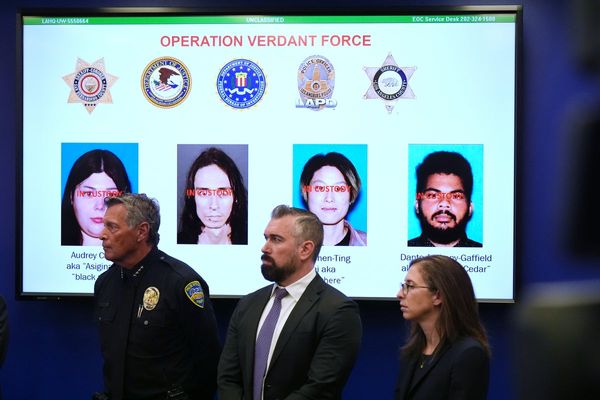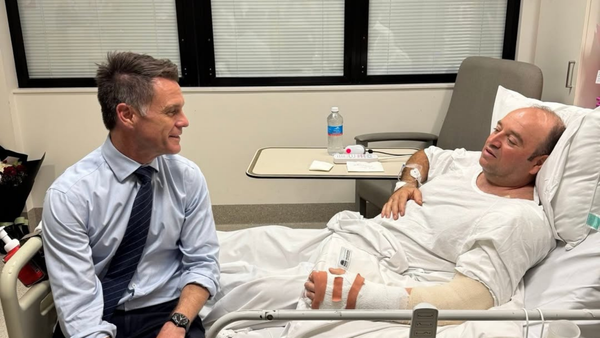This article first appeared on our partner site, Independent Arabia
Saad Salah, 50, and his family gathered their belongings and set off to chase the American dream that others from the village of Abu Qirqas in the Minya region of Upper Egypt had already attained. The father-of-five gave little thought to the cost of taking his family on a journey through more than half a dozen countries. He would not rest until he followed through with his plans, and secured a better future for his family. His wife, Ne'ma Nabil, and his children were unfazed by the prospect of the gruelling journey ahead, as a safer and more promising future awaited them at the end of it.
But just as their journey was drawing to a close, the worst happened. No sooner had they crossed into Mexico than gunfire erupted, tearing through the bodies of sisters Selvia and Eriny. Bleeding from their wounds, the girls took their last breaths as the dream that had carried them here faded away. Meanwhile, their younger brother Yostos took two bullets to the head and remains in a coma at the time of publication.
Having lost two daughters and uncertain about the fate of their young son, the devastated parents must now face the bitter reality of losing loved ones to violence while living in limbo, as they deal with investigations that only serve to deepen their grief and the prospect of returning home after their dreams were shattered looms over them. The family had hoped to find security and the brighter future their migration brokers had sold to them back in their village in Minya. Now, after a long and gruelling journey, they have discovered the other side of illegal migration, where dreams collide with a harsh and unforgiving reality.
This human tragedy raises the question of the reasons and motivations that drive countless Egyptian citizens to take the route of illegal migration. It also reveals how migration brokers in the governorates of Minya and Sharqia deceive their victims, lying about the ease of the journey while pocketing thousands of dollars.
In this investigative piece, Independent Arabia compiled data on the number of Egyptian migrants who used Central American routes to illegally cross into the US, and the number of those who died along the way, using information from US and international organisation databases from 2014 to 2024. We calculated the number of migrants killed in the same area where Mexican forces shot Saad Salah's family in Chiapas. The southern border region is considered one of the most dangerous places in Mexico, notorious for the proliferation of violence and smuggling gangs.
In the Upper Egyptian region of Minya, 245 km south of Cairo, from where hundreds of men, women, and children have embarked on dangerous migration routes through the jungles of Central America, we listened to the testimonies of five people whose journeys started from different places but who travelled the same rugged path in Central America. We also spoke to two others from Sharqia, 118 km north of Cairo. While five of the people we interviewed gave us identical names of smugglers they had met in these countries, two did not mention any names of those they had encountered. All the testimonies were consistent in their description of the journey, the rugged terrain crossed, and the names of people who helped them at foreign airports. The information has been condensed to avoid repetition. The witnesses, we report on who wished to remain anonymous, are referred to as Mustafa, Yusuf, Kareem and Abdulrahman*.
On the international level, the US Customs and Border Protection agency (CBP) provided detailed information from 2014 to November 2024 on the number of Egyptians who were encountered at the southern border of the US. Independent Arabia's investigation also relied on the International Organisation for Migration (IOM) database, Facebook groups, Red Cross reports, and the Insight Crime platform hosted by the American University in Washington, D.C.
We also spoke with individuals involved in smuggling networks, including one person in Minya Governorate who initially denied helping anyone take that route, but later admitted: “Things are at a standstill at the moment. It's very dangerous and difficult. I stopped this activity over a year ago," emphasising that he no longer advises anyone to take that route to travel to the United States because it is extremely risky.
We also contacted a woman in Guatemala who shelters migrants and helps them cross the border into Mexico. She declined to give details, but she didn’t deny the information in the testimonies.
The Mexican government has been contacted for comment.
Survivors recall the journey
Egyptian nationals are among the citizens of 100 countries caught by US patrols trying to sneak across the southwest border with Mexico, according to data from the US Immigration and Customs Enforcement (ICE) agency, part of the Department of Homeland Security. The data shows a significant increase in the number of migrants in both 2023 and 2024, with 2023 being the busiest year, recording over 3,000 individuals compared to around 2,000 in 2024.
The IOM's Missing Migrants Project database shows eight illegal migration routes to the US, the most common being the southern border crossing from Mexican soil, which is also the route chosen by Egyptian migrants.
In their testimonies, migrants who had managed to enter the US and whom we interviewed over telephone, spoke of several routes starting from Egypt. Migrants would fly to a country that easily issues visas to Egyptian nationals, such as Oman, Morocco, Senegal, Malaysia, Jordan, or Mauritania. Once there, they book a flight to Panama, which does not require Egyptians to obtain a visa in advance. From there they travel to Nicaragua, where they begin their overland journey through several Central American countries before arriving in Mexico and crossing into the US. The Central American leg of the journey takes about one to two weeks and is facilitated by human smuggling gangs.
The most common route for Egyptians begins in Oman. This is where Yusuf*, 26, and others started their journey at the beginning of August 2023. Yusuf had booked a flight to Nicaragua. According to the young man and others we spoke to, an Egyptian working at Muscat airport, known as 'Abu Nawwaf', helped them bypass security and board the flight. They were not questioned about their reasons for travelling to Panama.
We also spoke to Mustafa*, 26, who first travelled to Malaysia on a tourist visa. As he was preparing to leave the country for his next destination, Nicaragua, on 7 June 2023, Malaysian authorities barred him and others from boarding the plane, rejecting their claim that they were traveling for tourism. He was then forced to travel to Oman, as advised by the broker who helped him plan his itinerary.
Mustafa lost $5,200 (£3,850), the cost of the ticket from Malaysia to Nicaragua, and had to pay an additional $9,000 (£6,660) to that same broker, who worked for a well-known travel agency and booked him a business class ticket to Nicaragua. At an airport in Oman, Mustafa met Abu Nuwwaf, also an Egyptian national, and paid him an additional $650 (£480) to bypass security. “Abu Nuwwaf came to the counter, handed me my boarding pass, and handled all the registration procedures himself,” he says.
After several days in Oman, travellers fly via Istanbul Airport to Tocumen Airport in Panama. They then take a Cuban Airlines flight from Panama to the Augusto C. Sandino International Airport in Managua, Nicaragua. Yusuf says that when he left Oman for Istanbul, there were three other people with him, and that he met many others along the way who were also heading for the US border. “These were daily flights,” he noted. “There were over 50 Egyptians on the plane that took us to Panama, and they were all going to the southern American borders to seek asylum,” but apparently not all were lucky. “After landing in Panama and waiting for our next flight to Nicaragua, 32 people were denied boarding by airport security”.
After Independent Arabia published this investigative report, the Royal Oman Police announced that the General Directorate of Criminal Investigation, in coordination with the International Criminal Police Organisation (Interpol), had arrested an Egyptian resident who was found to be involved with an international network in carrying out several migrant smuggling operations in exchange for money.
The official statement issued by the Omani authorities addressed details that align with what Independent Arabia had published about this person, reinforcing the testimonies of those who provided information to Independent Arabia.
‘Do you want to cross the border?’
On arrival in Nicaragua, travellers purchase a visa to enter the country. Outside the airport, "Henry" is waiting for them. The 40-year-old man with Hispanic features is part of a smuggling ring operating in Central America. There is a note on his mobile phone in Arabic, translated from Spanish: “Do you want to cross the border?”. In taxis that can carry four passengers, Henry transports migrants to the Honduras border, where they meet another smuggler who accompanies them into Honduras. Once on Honduran soil, the migrants register their details with the local authorities and are permitted to stay in the country for one day. Abdulrahman*, 18, says, “We met large groups of illegal immigrants there. At the time, there were many Egyptians as well as those from African, Arab, and Latin American nationalities.”
Migrants continue their journey in Honduras and board an eight-hour bus to Guatemala. Kareem*, 19, says: “We took a bus from a big station with a lot of activity, like the Super Jet station in Egypt. Once on the bus, we contacted a lady from Guatemala called Maria.” The young man was given Maria's number by Maher, a broker in his village in Minya who booked the tickets for him. “I contacted her as soon as I arrived in Honduras and kept sending her my location. Before we reached the Guatemalan border, the lady told us to get off at a particular place where someone was waiting for us. So, we ended up getting off on the highway and walking for over two hours through forests and farms the rest of the way into Guatemala to avoid the checkpoints along the highway.”
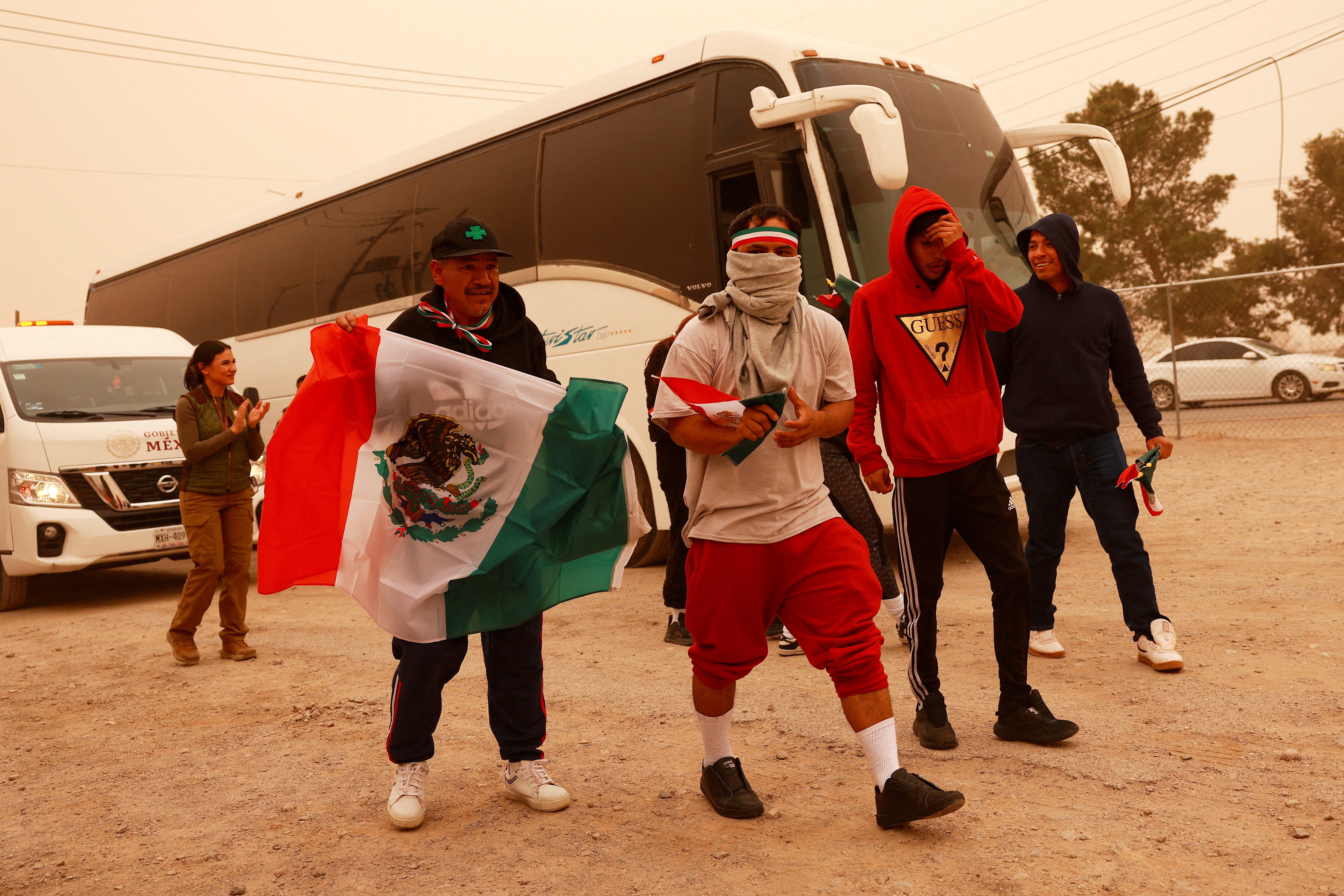
The Tapachula cartels
The migrants continued their journey through the forests sitting in the closed, unventilated back of a pickup truck. The vehicle took them to a simple-looking building called 'the hotel' on the outskirts of Guatemala to rest and wait for other groups coming in from different countries. One of the young men we spoke to said they had to cross a lake resembling a rainwater collection tank and walk across a crumbling, treacherous wooden bridge to avoid security checkpoints along the way. At midnight, a yellow bus resembling a school bus took them to the Mexican border, specifically to Tapachula, the first border area that illegal migrants reach in Mexico. It is in the far southeast of the state of Chiapas, where Saad Salah's family came under fire from the Mexican army.
Tapachula is considered a hub for drug trafficking gangs. According to InSight Crime, drug trafficking gangs have found a lucrative market in the growing number of migrants crossing Mexico in hopes of reaching the United States. A report released last summer showed that migration has become a major source of income for drug trafficking gangs in this southern Mexican border town, namely the Sinaloa and Jalisco New Generation (Cartel Jalisco Nueva Generación – CJNG) cartels.
Smugglers pay cartels up to half of their earnings. One trafficker said he receives between $9000 and $11,000 (£6,600 and £8,100) from migrants and gives about $6,000 (£4,400) to drug gangs.
Failure to pay the 'toll' can have terrible consequences, including kidnapping, torture, and possibly death. In May 2023, 49 migrants, including 11 children, were kidnapped in Tapachula on their way to the US-Mexico border. After about a week, authorities found the migrants, who had paid the cartels ransom, alive in central Mexico. Egyptian nationals confirmed to Independent Arabia the heavy tolls paid along the way.
Another smuggler said: “Now that the drug lords have understood how big this market is, everyone wants a piece. The bigger the cut, the better.”
A hotspot of violence
The three Egyptians killed last October were in Huixtla, a town near Tapachula in the state of Chiapas. InSight Crime describes Chiapas as a long-standing hotspot of criminal violence between groups competing to control territory on Mexico's southern border, a major smuggling hub for both drugs and migrants.
Internal Mexican army reports note a sharp increase in violence in the state since 2021, particularly along the southern border where Egyptian and other migrants enter Mexico from Guatemala. This trend coincides with the CJNG's incursion into border municipalities that were once strongholds of the rival Sinaloa cartel.
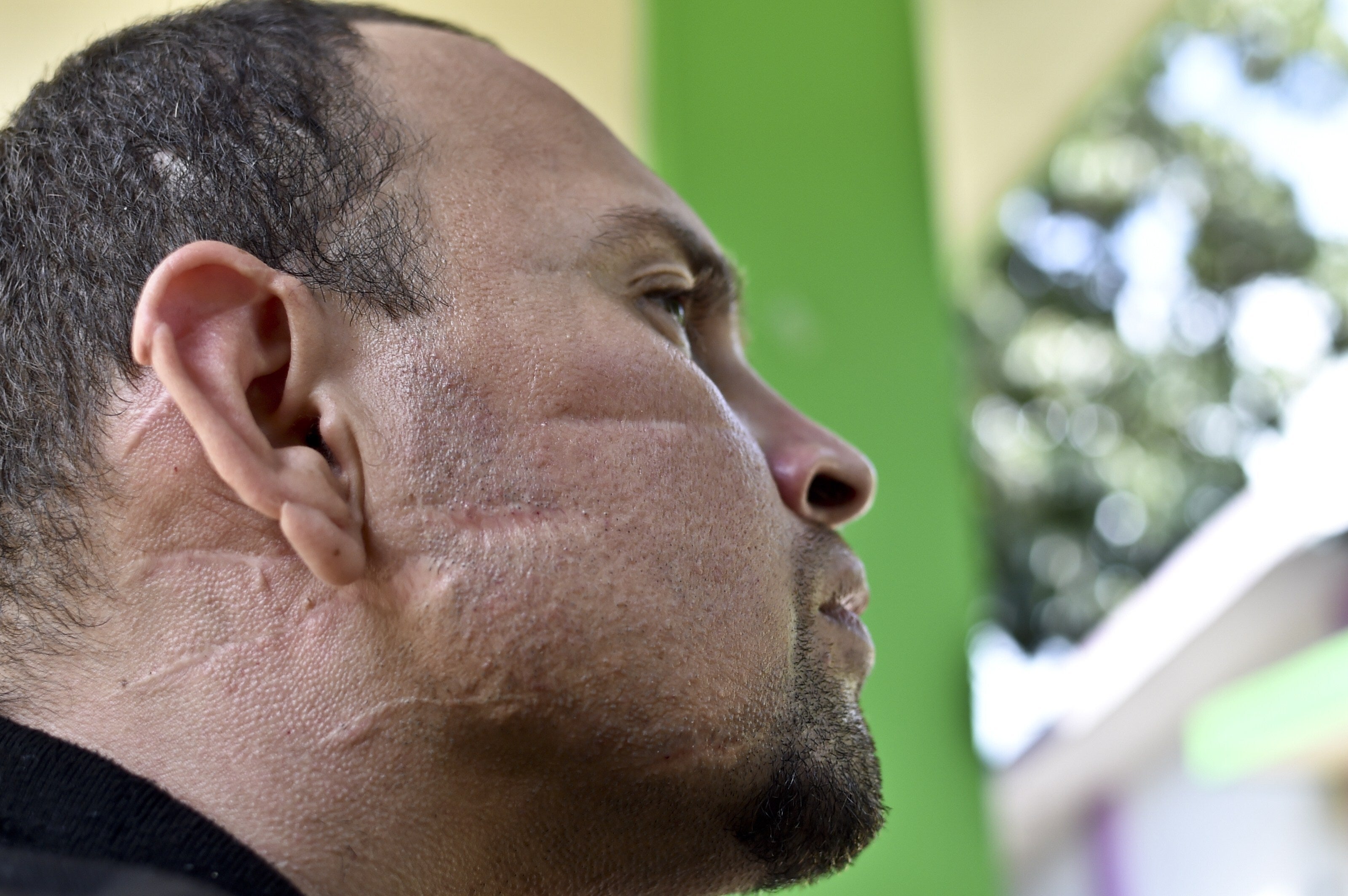
Speaking to Independent Arabia from California, Rafat Salib, president of the General Union of Egyptians Abroad (GUEA) in the US, who followed the shooting of Saad Salah's family and assisted them in coordination with the Egyptian and Mexican foreign ministries, said drug traffickers were also present on the bus carrying the Egyptian family. Upon its arrival in Mexico, the country's armed forces opened fire on the bus, killing the two Salah girls and another young man, 17-year-old Badie Makram. Meanwhile, Yostos Salah is still in intensive care in Mexico, where his father, who was shot in the foot, has been granted a residence permit to remain with his son.
In its report published last August, InSight Crime noted an increase of violence and forced displacement in Chiapas with 12,771 cases of forced displacement during the first seven months of 2024, compared to 4,562 for the whole of 2023.
Unsafe transport and tolls
The Egyptians we interviewed said that in Tapachula, 'Tribio', a member of the smuggling ring, received $2,000 per migrant in transport fees for 14 days within Mexico. Mustafa and others added that Tribio used to transport groups of migrants in overcrowded trucks, cramming “60 people in a car that could only carry 10 people”. While Yusuf recalled being transported “in a vehicle like the ones used for cattle, but with the trunk completely closed.”
According to another testimony, they stayed at a hotel at first, and over the next two weeks the Mexican smuggler moved the groups from farm to farm. “There was a big tent and we slept there. Before we reached Mexico City, he separated us and grouped us by nationality.”
The truck carrying migrants from Mexico to the US border takes 13 hours. Although it was designed to carry 60 people, it was crammed with 120 migrants. Yusuf said that when they first started the journey to the border, they were stopped by Mexican security forces. The driver fled, and the group was detained overnight before being released with a one-week permit to remain in Mexico. “Tribio” resumed contact, arranging their next move and claiming to have bribed officials for safe passage.
While travelling within Mexico, Egyptians interviewed by Independent Arabia said they had to bribe what looked like security forces, along the way to be let through. “We paid between 50 and 200 pesos per passenger. If a passenger did not have enough money, they would be searched along with their bags,” one person said. All testimonies mentioned that any valuables the passenger had, such as a mobile phone or power bank, would be taken.
In Mexico City, 'Saied', a smuggler from Morocco, took over. He was another member of the smuggling ring, who took $1100 (£800) from each migrant and put them up in a hotel he owned for a few days. Saied stamped their passports, and guided them around security checkpoints. One group had to stop halfway and stay in a hostel owned by Saied because there were high-ranking officers at one of the checkpoints.
From there, the migrants took a 24-hour bus ride to Arizona. After crossing the border on foot, they walked along the wall until they reached American soldiers. US authorities transported them to a processing centre, confiscated their belongings, conducted strip searches, scanned fingerprints, and took photographs. After spending a day in the holding facility, migrants were transferred to a long-term camp—where Mustafa remained for a month.
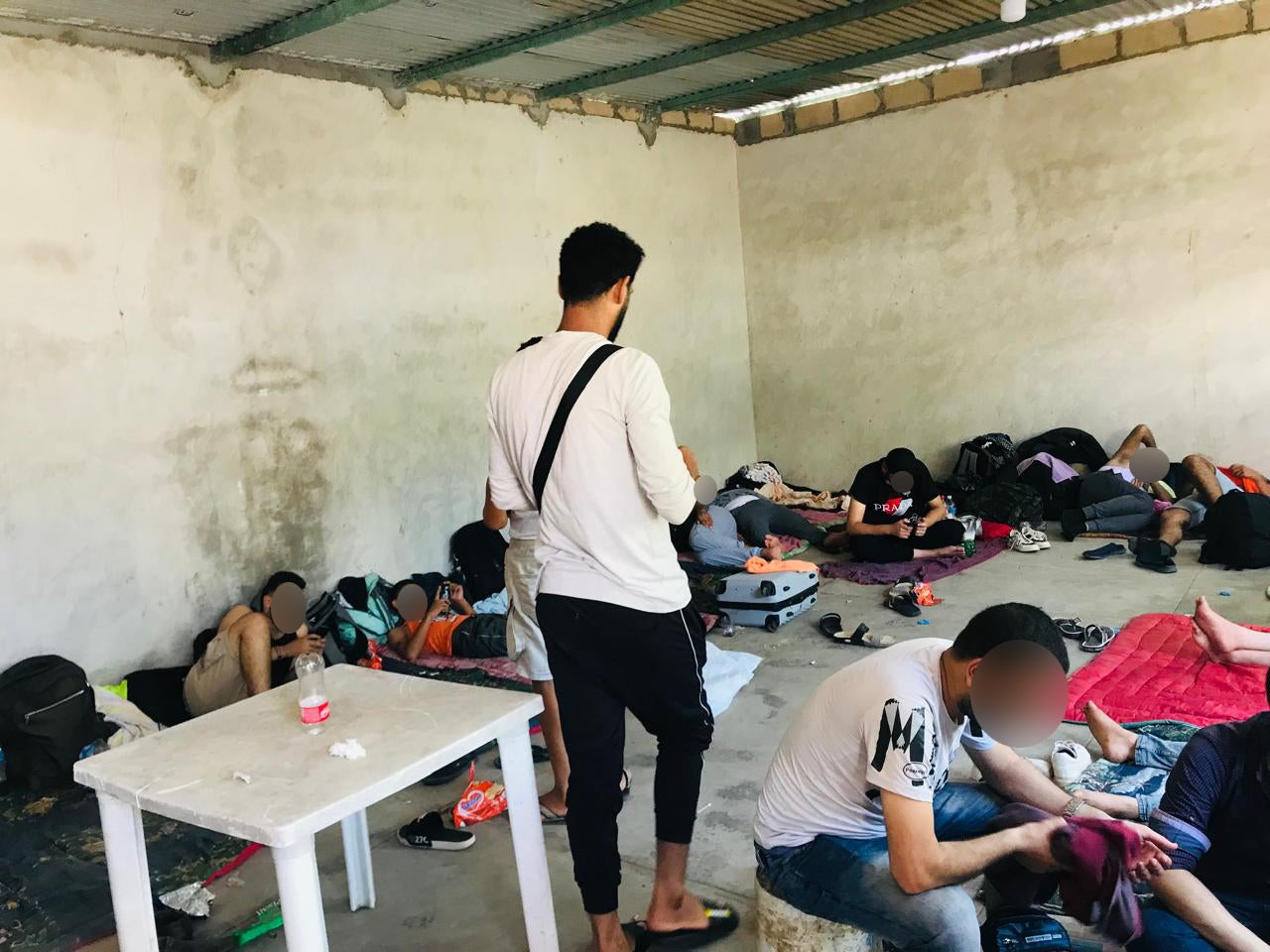
The financial impact
A trip along this route costs between $9,000 (£6,680) and $15,000 (£11,100) which is equivalent to about half a million Egyptian pounds. Yusuf paid a broker around 240,000 Egyptian pounds (£3,560). Mustafa, on the other hand, booked his trip through travel agencies and paid $9,000 (£6,680) for first-class seats.
Many migrants cannot afford these sums. Families often take out loans with interest rates as high as 30%, and sign promissory notes. Saleem*, who works in a gas station, says he sends home money every month to pay off the debt to their neighbour. While he benefits from a good exchange rate, life on low wages is tough.
The motivation to migrate can vary—economic hardship, societal problems, or religious persecution—but all migrants share the hope of achieving the ‘American dream’. We contacted the older son of the Egyptian family caught in the October shooting, who did not travel with the family, to find out the motives behind his father's decision to leave. He refused to speak to us, saying he was in a bad mental state.
Yusuf, the father of a two-year-old girl who lives with her mother in Egypt, said, “Things are hard in Egypt. We decided to leave, whatever the cost. The road was difficult, and it was often difficult to sleep, either because I was afraid or because the place I was in was not suitable. But when exhaustion kicked in, I would fall asleep. Our time in Mexico was the hardest because it was raining and cold, and we had no blankets.” Abdulrahman is a young man whose friends from the village had travelled before him. This encouraged him to take the plunge. “Some of my friends and acquaintances travelled over three years ago, going through Colombia and about ten other countries. I saw how happy they were and that they were making money to support their parents. I contacted them and they provided me with information,” he says. Mustafa, for his part, notes that he was well off in Egypt, but faced other pressures. “If things were going well, I wouldn't have left,” he added, suggesting, without giving further details, that he had been harassed by extremist Islamist groups in his village because he was Christian.
Some hope to join relatives already in the US. One man said he repeatedly failed to secure a tourist visa, leaving illegal migration as his only option. Another traveller, who took out huge loans, hoped to secure a better education and opportunities for his son.
However, not all those lucky enough to reach US soil are able to stay. Migrants are interviewed upon arrival and must convince border officials of their asylum claims. According to Mustafa, of the 300 Egyptians who arrived with him, 50 were deported.
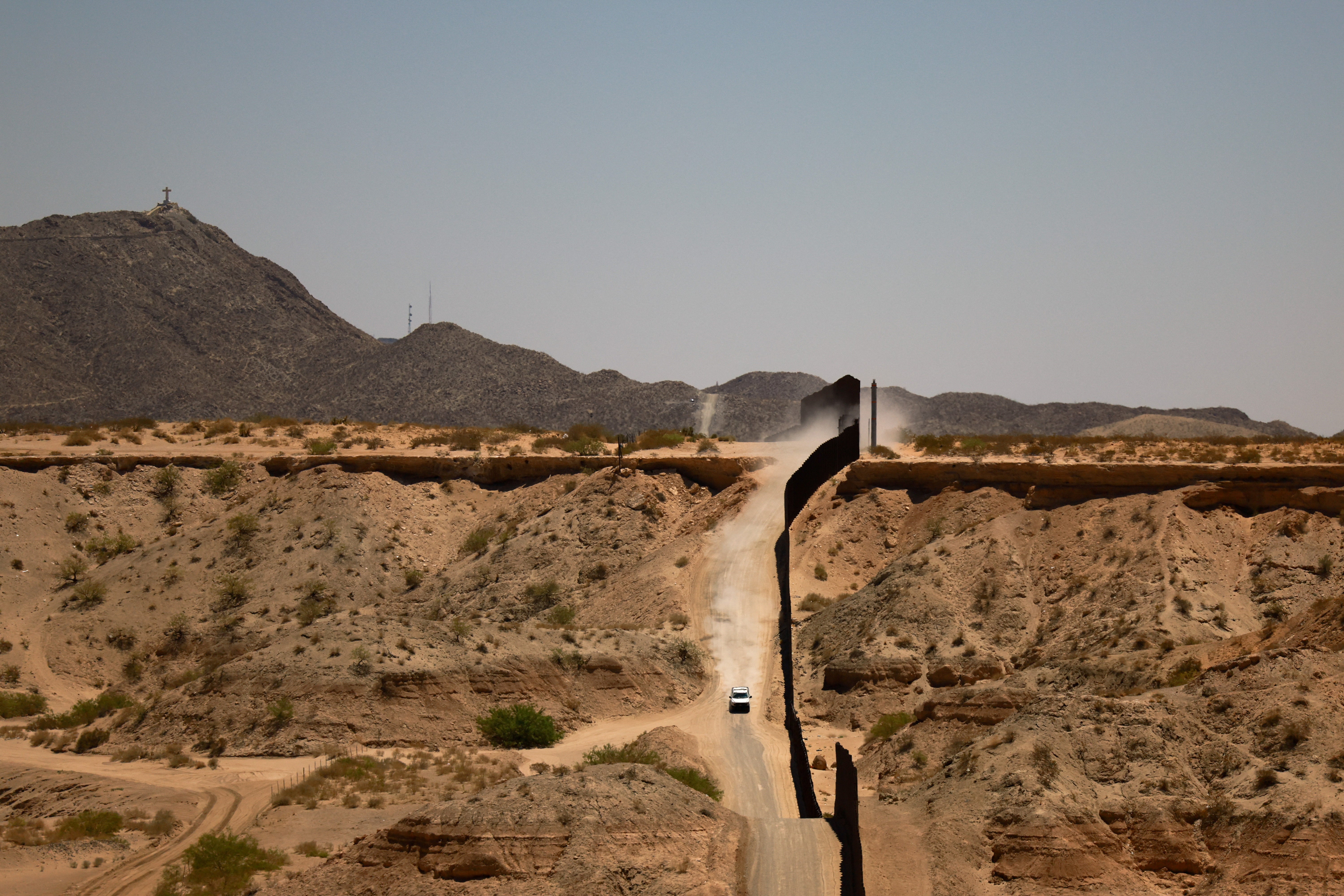
Ahmed Badawy, president of the Egyptian Foundation for Refugee Rights (EFRR), said that economic hardship is the main push factor but pull factors, such as having relatives abroad and social media narratives also play a part. Platforms like TikTok are used to spread illusions about an easy life abroad, and brokers downplay the dangers.
Badawy stresses the need to raise awareness about the harsh realities- both of the journey and of living in the West. Since March 2022, the Egyptian pound has rapidly depreciated against the dollar, causing inflation and a drop in living conditions. In April, the World Bank warned of rising poverty levels. Official statistics from 2020 put Egypt’s poverty rate at 29.7%, but more recent estimates suggest it may have surpassed 35% by mid-2023. Heba Al Laithi, a consultant at the Central Agency for Public Mobilisation and Statistics, highlighted that this level could have exceeded 38 per cent without government initiatives, such as the Solidarity and Dignity cash transfer programme and the Dignified Life project.
Migration drivers
The stories that asylum seekers tell American authorities vary from person to person, and while some are true, others are well-crafted lies. Interviewees asked that the details of the stories they told immigration authorities not be revealed, but some remain in the US after claiming religious or political asylum. Further research revealed that many women seek asylum to protect themselves from female genital mutilation (FGM) in their countries. Many Facebook groups offer advice on this issue, and one user with two daughters wrote that she was living in the US after seeking asylum to protect her girls from FGM.
GUEA president Rafat Salib says that Egyptian immigrants rely on various arguments taught to them by the broker back home who planned their trip. These include economic arguments that are unconvincing and unacceptable to US immigration authorities.
Salib added that women often seek asylum to protect themselves from FGM, which is a strong argument that is accepted after rights organisations have medically examined them. He mentioned that members of one of the groups applied for political asylum, but their application was rejected because their stories had no basis. Others are seeking religious asylum.
Badawy noted that in recent years, he has come across people claiming to be homosexuals persecuted in their countries in order to obtain asylum. He said other migrants present forged police reports and court orders to foreign governments.
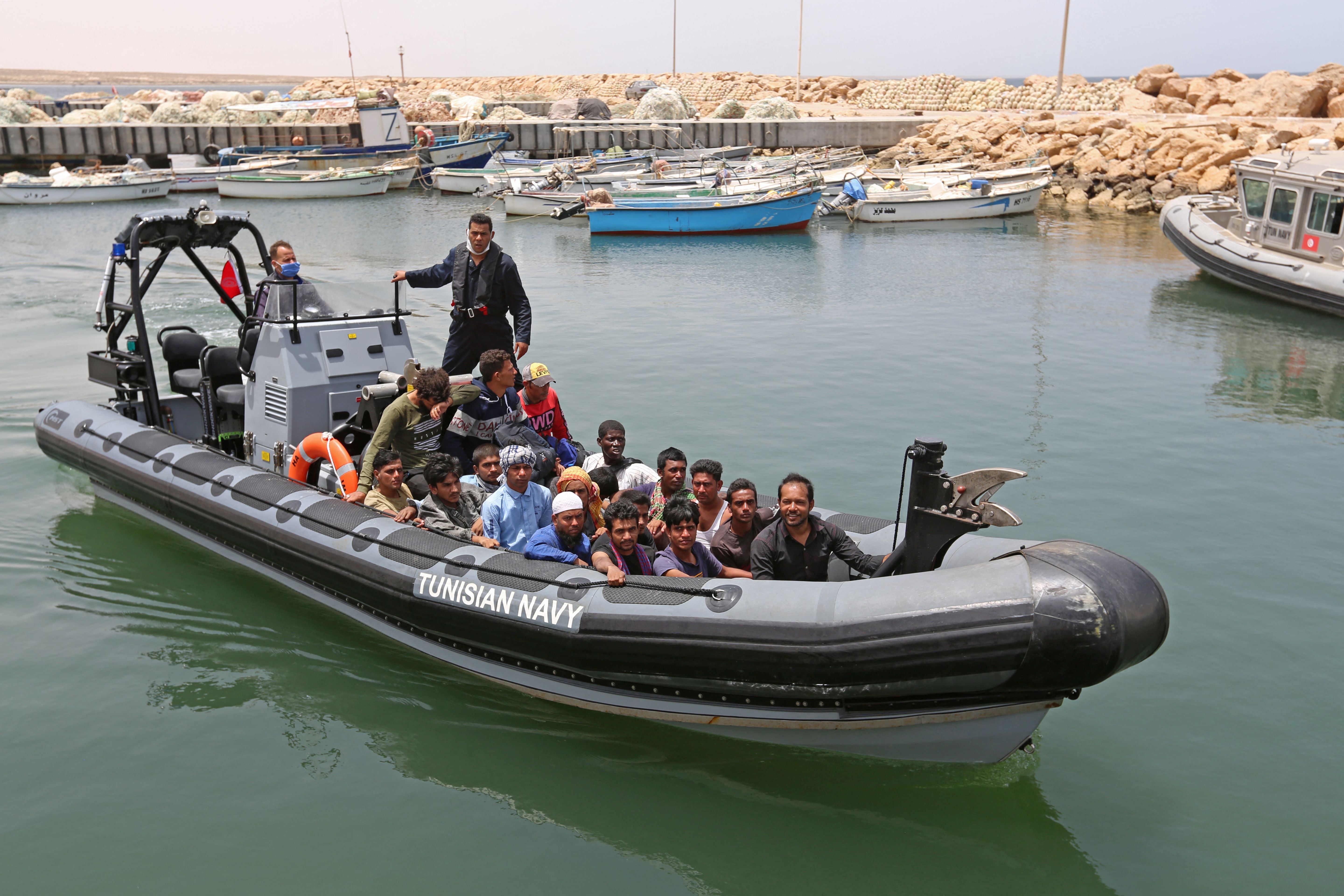
Over 9,000 lives lost
Those who make the dangerous journey through Central America and Mexico face many risks. They can be shot at by smuggling gangs or Mexican security forces, who often mistake migrants for drug traffickers. Others die in road accidents, caused by harsh terrain and dilapidated vehicles. Mustafa recalls a smuggler threatening to shoot him after a minor disagreement, stopping only after a Spanish woman intervened.
The IOM's Missing Migrants Project database shows that between 2014 and 2024, 11,000 people died while trying to enter the US illegally, with most deaths occurring in the last four years. Around 3,725 people drowned, mostly during the Caribbean crossings or coastal attempts via Mexico. Another 3,269 died of unknown or multiple causes.
Meanwhile, harsh environmental conditions and lack of food and safe shelter claimed 1,682 lives, while vehicle and road accidents caused 1,295 deaths. Violence, either by gangs or government authorities led to 524 deaths, including the three Egyptians who lost their lives last October. In addition, sickness and a lack of adequate medical care, led to the deaths of 241 people while 264 accidental deaths were recorded.
The IOM notes that migrants crossing Central America and Mexico are at risk of exploitation when using illegal routes. Following the imposition of stricter migration laws and surveillance throughout Mexico, individuals have resorted to more clandestine and remote travel routes in an attempt to evade government checkpoints. However, this route often requires the use of very unsafe transport and long treks across arid terrain, where migrants are often systematically abused, injured and extorted.
Sexual violence
There are reports of migrants from Egypt being sexually assaulted along the way, says Salib. He adds that he knows of five Egyptian women who have been raped by gangs in Central America and Mexico. He remains in contact with Egypt’s Foreign Ministry to curb migration through these dangerous routes. Salib also warned families, especially from Minya, against sending minors alone—many of whom are detained by US authorities and placed in foster care until they turn 18.
Since taking office in January, US president Donald Trump has promised to halt illegal immigration and launched the largest deportation operation in US history. Following his election, he announced an agreement with Mexican President Claudia Sheinbaum to block illegal immigration through Mexico. In a post shared on his platform Truth Social in November, Trump said Mexico was “effectively closing our southern border”.
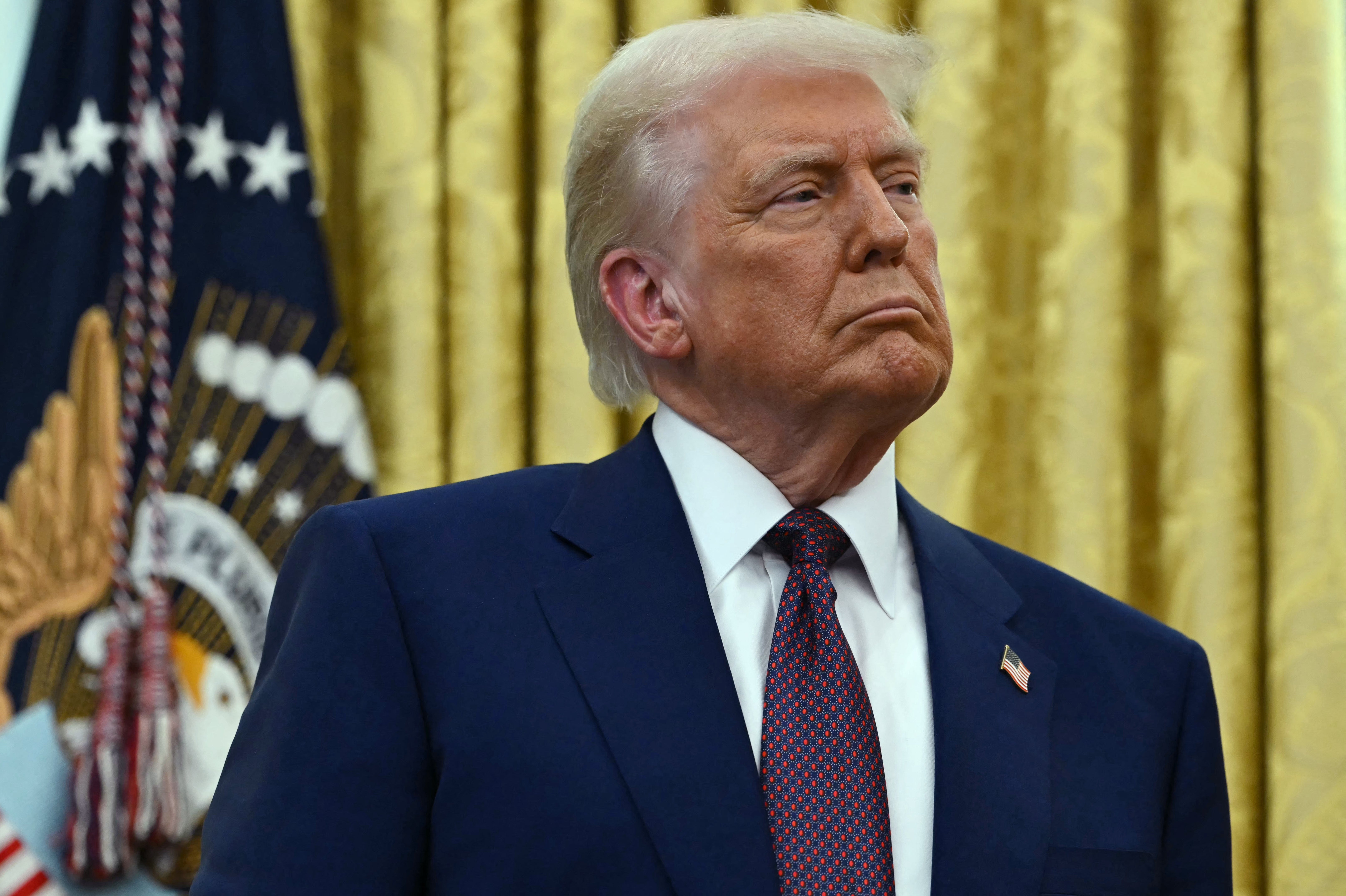
An alternative to Europe
In recent years, fewer Egyptians have risked their lives crossing the Mediterranean to reach Europe. According to EFRR’s Badawy, this decline is largely due to agreements between the European Union and North African countries like Egypt, aimed at curbing illegal migration. As a result, many Egyptians have changed routes, opting instead to travel to Central America—where visas are easier to obtain—before attempting to enter the US illegally.
In 2018, Egypt launched the “National Action Plan to Combat and Prevent Illegal Migration” in response to the migration crisis . In cooperation with the EU, Egypt has launched special programmes to support and empower young people, particularly in rural areas which are hotbeds of illegal migration such as Sharqia, Minya, Giza and coastal towns such as Burullus and Rashid.
Independent Arabia spoke to Egyptian Foreign Ministry spokesman, Ambassador Tamim Khallaf, who said that the government has adopted a comprehensive approach to tackling the issue, which focuses not only on confronting the security aspect of the issue, but also on addressing its root causes and socio-economic drivers by focusing on development. In 2016, Egypt passed a law that imposes heavy penalties on those involved in smuggling migrants, especially in cases involving women, children, or vulnerable individuals.
Badawy emphasised the need for greater involvement from civil society, and for the media to raise awareness and counter misinformation spread on social media platforms like TikTok. He also called for more deterrents targeting both migrants and the brokers who facilitate their journeys.
*Names have been changed to protect privacy.
Reviewed by Tooba Khokhar and Celine Assaf
Israel-Iran live: Explosions heard in Tehran and Tel Aviv as Trump urges diplomacy
Mapped: UK, US and French military base locations across the Middle East
Starmer resists recognising Palestinian state as unions’ demand deepens Labour split
British man stranded in Israel considers desert escape after Iranian missile strikes
Is it safe to travel to Israel? Your rights as conflict with Iran escalates
UK should protect allies in the Gulf and Middle East – but Israel isn’t one of them


